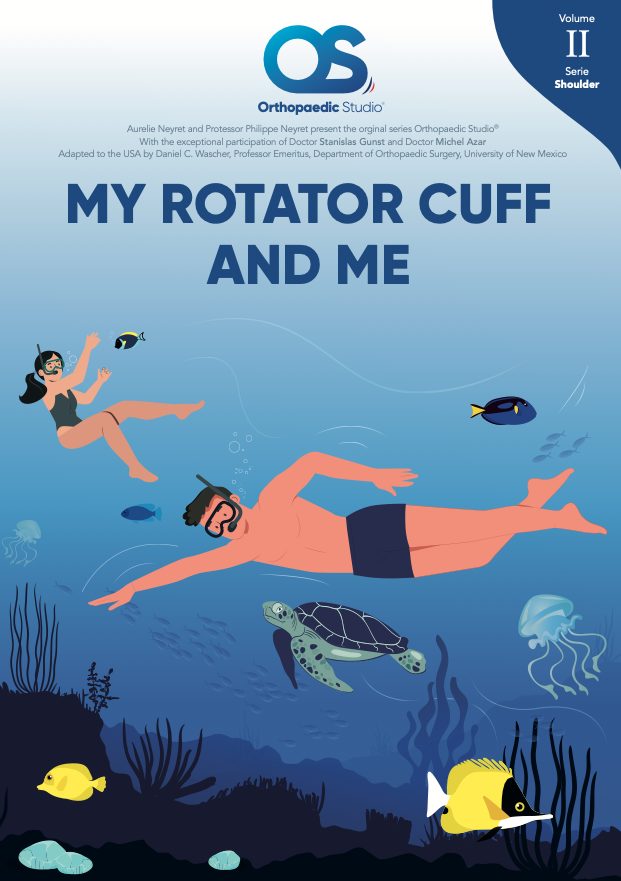
All you need to know about
The rotator cuff
Why should you, as a patient or future surgeon, inform yourself? It’s about you and your shoulder.
You are the principal actor of your surgery
You will be the only one present from the beginning to the end of the care process, from A to Z and beyond that, you’ll have to live with it. In other words, you need to be part of the project, part of the surgical team. To feel at ease within this team, it’s essential to inform you and give you the keys to communicating as well as possible with the caregivers.
What is rotator cuff repair?
Repairing the cuff involves securing the tendons in place on the bone, so that they can heal in the correct position.
This is usually combined with a procedure on the biceps tendon: a tenotomy, which involves cutting the biceps tendon (its long head, the one that runs through the glenohumeral joint). The tendon is then either left free (and retracts), or can be attached to the bone by modifying its place of attachment: this is tenodesis. The aim of this procedure is to relieve pain associated with inflammatory processes in the shoulder. Finally, acromioplasty, or “planing” of the acromion, is often performed during cuff repair surgery, to remove the conflict with the cuff tendons.
Why repair the rotator cuff?
The muscles of the rotator cuff are attached to the bone via tendons, which form the link between bone and muscle.
Just as a rope can break over time, tendons can also break or detach from the bone: this is called a cuff tear.
This rupture may involve one or more tendons, either as a result of progressive wear and tear caused by daily use and repetitive movements, particularly of the arm in the air (wear-induced cuff rupture), or during an acute trauma (fall on the arm, sports accident, etc.: traumatic cuff rupture).
Chronic cuff tears due to wear and tear often follow a period of pain associated with tendonitis, which gradually leads to tendon rupture, like a rope that breaks under excessive strain. These ruptures are often linked to hyper-solicitation phenomena, whether of sporting or professional origin.
Acute ruptures are the result of an accident or trauma that “tears” the tendon, which was previously well inserted and healthy. Acute ruptures are, by definition, sudden in onset, and are difficult to tolerate, as the “normal state” is suddenly transformed into a “pathological state”.
Finally, a traumatic cuff tear can occur on an already worn shoulder, and be responsible for a sudden worsening of old pain.
What are the consequences of a rotator cuff tear on my shoulder?
Rotator cuff tears are a very common pathology, especially after the age of 60. Studies show that 20 to 30% of people over 60 have a rotator cuff tear!
While some people live very well with a rotator cuff tear, particularly those who do little physical activity involving the shoulders, others can be severely affected.
Excessive stress (e.g. sports driving, wheel warping) or overloading… which are external factors (but can be influenced) can accelerate tendon wear.
A ruptured cuff leads to a loss of strength and often insomniac pain. In the long term, the shoulder’s environment becomes unbalanced, leading to wear and tear of the joint and cartilage: this is osteoarthritis.
Other factors may favour the onset of osteoarthritis: genetic factors, which remain poorly understood to this day, traumatic factors (sports or ligament injuries, joint fractures, surgery), but also certain inflammatory diseases (rheumatoid arthritis, ankylosing spondylitis), or non-infectious diseases (blood disease, aseptic necrosis, metabolic dysfunction such as gout, chondrocalcinosis).
